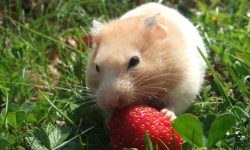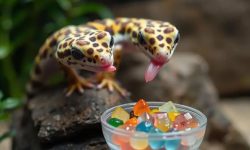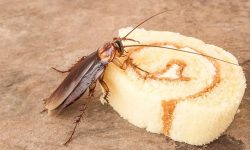Iguanas are impressive reptiles with personalities as bright as their green scales. Whether they live high in tropical canopies or spend their days basking near warm rocks, their diet plays a huge role in their health, growth and behavior. Knowing what iguanas eat is essential for keeping them strong, active and disease-free—especially for pet iguanas that rely entirely on their owners for proper nutrition.
In the wild, iguanas eat mostly plant-based foods. Their digestive system is built for leafy greens, flowers, and nutritious vegetables. While some species occasionally nibble fruit or edible blossoms, the majority of their diet should come from high-fiber, vitamin-rich plants. This natural diet supports their bones, muscles, energy and internal balance. A proper feeding routine can significantly extend an iguana’s lifespan and improve overall well-being.
This guide explores 20 nutritious foods iguanas love most, with each item explained clearly. Whether you’re caring for a pet iguana or simply curious about their diet in nature, this article offers a complete understanding of how to keep these remarkable reptiles thriving.
Understanding the Iguana Diet

Iguanas are primarily herbivores, especially green iguanas—the species most commonly kept as pets. Their long digestive tract is designed to break down plant matter slowly, extracting nutrients from leafy greens, flowers and tender stems. This means animal protein, dairy and insects are not suitable for them, no matter how tempting it may seem to offer varied foods. A plant-based menu provides everything they need.
Calcium is one of the most important nutrients for iguanas. Without enough calcium—or with too much phosphorus—they can develop metabolic bone disease, a painful and sometimes irreversible condition. That’s why leafy greens form the core of a healthy iguana diet. These greens provide fiber, hydration and essential vitamins that support bone strength and overall health.
Hydration also plays a huge role. Iguanas naturally stay hydrated through their food, especially plants with high water content. Fresh vegetables and leafy greens provide both moisture and nutrients, reducing the risk of dehydration. By understanding the fundamentals of an iguana’s diet, owners can create a well-rounded feeding regimen that mirrors what these reptiles eat in nature.
20 Nutritious Foods Iguanas Love Most
1. Collard Greens
Collard greens are one of the most nutritious staples for iguanas. They are rich in calcium, fiber and vitamins, providing the nutrients necessary for strong bones and healthy digestion. The thick leaves mimic the tough vegetation iguanas often encounter in the wild.
Because collard greens have an excellent calcium-to-phosphorus ratio, they help prevent metabolic bone disease. Fresh, chopped collard greens can be mixed with other greens to create a nutrient-balanced salad. Iguanas enjoy the texture, which encourages natural chewing habits.
These greens hold moisture well, helping your iguana stay hydrated throughout the day. They’re ideal for daily feeding and make up a large portion of a healthy iguana diet.
2. Mustard Greens
Mustard greens offer a bold flavor that many iguanas enjoy. These greens are loaded with vitamins A, C and K, which support immune health and keep skin and scales in great condition. Their slightly peppery taste adds variety to daily meals.
They are also high in calcium and fiber, two essential nutrients for proper digestion and skeletal support. Like other leafy vegetables, mustard greens closely resemble wild plant matter iguanas browse in nature. Feeding them regularly helps total nutritional balance.
Because of their strong scent and taste, mustard greens can be used to encourage picky eaters to consume a broader diet. They blend well with softer greens like lettuces and turnip greens.
3. Turnip Greens
Turnip greens provide a rich source of calcium, vitamins and essential minerals. They help maintain bone strength and support the reptile’s natural metabolism. Iguanas tend to enjoy the soft leaves, making them perfect for everyday feeding.
These greens offer hydration and natural fiber, regulating digestion and preventing constipation. Their tenderness makes them easy for young iguanas to chew and swallow. A mix of chopped turnip greens helps diversify any iguana’s salad.
Turnip greens resemble wild leafy plants that iguanas instinctively forage, making them a familiar and nutritious option in captivity.
4. Dandelion Greens
Dandelion greens are one of the healthiest foods for iguanas. They grow naturally in many environments, so wild iguanas commonly feed on similar broad-leaf plants. These greens offer calcium, iron, vitamin A and fiber.
The mild bitterness of dandelion greens encourages natural feeding behavior. Their thin, elongated leaves are easy to shred, making them ideal for young and adult iguanas alike. They help cleanse the digestive tract and improve gut health.
Dandelion greens also support hydration. Their natural mineral content helps iguanas maintain balanced body functions, making them a valuable addition to any diet.
5. Endive
Endive is a leafy vegetable with a crisp texture that iguanas enjoy. It provides fiber, hydration and vitamins, contributing to overall health. Endive adds a refreshing crunch to meals, which can entice even picky reptiles.
This vegetable is low in oxalates, making it a safer choice than some leafy greens. It complements calcium-rich greens well, helping create a balanced daily feeding routine. Iguanas benefit from the light moisture content endive provides.
In nature, iguanas often nibble on tender plant shoots similar to endive leaves. It’s a safe, nutritious, and easy-to-prepare ingredient.
6. Escarole
Escarole is a mild, leafy green that supports hydration and digestion. Its soft leaves are easy for iguanas to consume, making it especially suitable for younger reptiles. Escarole adds texture and volume to daily salads.
Like many leafy greens, escarole is rich in vitamins A and K. These nutrients support immune function and skin health. The broad leaves also encourage chewing, promoting natural feeding behavior.
Because escarole has balanced moisture and fiber levels, it helps maintain digestive rhythm. It’s safe enough to include multiple times a week.
7. Hibiscus Flowers
Hibiscus flowers are not only safe for iguanas—they’re one of their absolute favorites. Their bright colors and sweet scent attract iguanas instantly. The petals provide fiber, antioxidants and natural plant compounds supportive of digestion.
In the wild, iguanas regularly consume blossoms from trees and shrubs. Hibiscus closely mimics those natural flowers. The soft petals and leaves make excellent enrichment treats during feeding sessions.
Fresh hibiscus flowers can be given whole or shredded onto salads. They add variety and make meals visually appealing, stimulating appetite.
8. Squash (Butternut, Acorn, Zucchini)
Squash varieties like butternut, acorn and zucchini are full of vitamins and moisture. Their soft texture, once shredded, makes them easy for iguanas to digest. These vegetables are excellent for promoting hydration.
Squash is rich in beta-carotene and vitamin C, which support immune strength and eye health. Its natural sweetness appeals to many iguanas, breaking up the monotony of leafy greens.
Shredded squash pairs well with stronger greens, making it ideal for balanced salads. Iguanas often enjoy its smooth, tender flesh in moderation.
9. Bell Peppers
Bell peppers provide crunch, hydration and vibrant colors. Iguanas are attracted to red and yellow peppers due to their bright hues, which mimic certain flowers and fruits they encounter in the wild. The mild flavor makes peppers easy to accept.
These vegetables are high in vitamin C and antioxidants, supporting overall health. Their moisture content helps with hydration, especially in hot climates. Cutting peppers into thin strips makes them easier for iguanas to eat.
Bell peppers add variety to salads, encouraging more active feeding behavior. They are safe for regular use when seeds are removed.
10. Green Beans
Green beans offer plant-based protein, fiber and moisture. Their firm texture gives iguanas something satisfying to chew, encouraging natural feeding habits. They are easy to chop into bite-sized pieces for daily meals.
Because green beans are not as calcium-rich as leafy greens, they work best as part of a mixed salad. Their fiber content supports digestive health and prevents sluggish gut movement.
Iguanas living in the wild occasionally browse on tender stems and seed pods, making green beans a familiar dietary addition.
11. Mango (In Moderation)
Mango is a sweet, aromatic fruit that many iguanas love. Its soft texture makes it easy to eat, and its vibrant color appeals visually. Mango provides vitamins A and C, which support skin, eyes and immunity.
Because of its natural sugar content, mango should be served sparingly—tiny pieces once or twice a week. Iguanas enjoy the treat, but it should not replace daily greens.
In tropical environments, iguanas occasionally consume fallen ripe fruits. Mango offers a safe, domesticated version of that natural behavior.
12. Papaya
Papaya is another fruit that iguanas enjoy in small amounts. It’s hydrating, soft, and packed with beneficial enzymes that help digestion. Its bright orange color and sweet aroma entice many reptiles.
As with mango, papaya should be fed occasionally due to sugar content. A teaspoon-sized piece works well as a treat. It can also be mixed into salads to encourage appetite.
Wild iguanas sometimes encounter naturally fallen papayas or fruiting plants, so this fruit fits their instinctive feeding pattern.
13. Berries (Strawberries, Blueberries)
Berries provide antioxidants and hydration. Their juicy texture makes them great occasional treats for iguanas. Many reptiles enjoy the sweetness of strawberries and blueberries.
Because berries contain natural sugars, they must be served sparingly. A small slice of strawberry or a single blueberry is plenty. Overfeeding could lead to digestive issues.
In nature, iguanas rarely eat berries regularly, so these fruits act as enrichment rather than dietary staples.
14. Okra
Okra is a mild vegetable offering fiber and hydration. Its soft interior makes it easy for iguanas to chew, especially younger reptiles. When chopped into small rings, okra mixes well with salads.
It is rich in antioxidants and vitamins that support general wellness. Okra’s unique texture also encourages curiosity, making mealtime more engaging.
In the wild, iguanas often eat tender plant shoots similar in texture to okra pods.
15. Parsley
Parsley is an herb that provides minerals and natural plant compounds promoting digestion and immunity. Its fragrant leaves add aroma to salads and can encourage picky eaters.
Because parsley contains higher levels of oxalates, it should be fed in moderation. A pinch sprinkled over greens is sufficient for extra flavor.
Parsley resembles many aromatic plants iguanas browse occasionally in their natural habitat, making it a familiar taste.
16. Cilantro
Cilantro is hydrating and flavorful, offering vitamins and minerals that support immune function. Its soft leaves are easy for iguanas to chew and digest.
Like parsley, cilantro should be used in moderation. It pairs well with staple greens to improve variety and scent. Many iguanas enjoy the refreshing aroma.
In tropical environments, iguanas often feed on soft herbs and aromatic plants similar to cilantro.
17. Prickly Pear Cactus Pads (Nopales)
Cactus pads are traditional foods for wild iguanas in desert and dry regions. Once the spines are removed, the pads offer hydration, vitamins and fiber. Iguanas enjoy their soft, succulent texture.
Nopales are rich in calcium and moisture, making them excellent for hydration. They can be chopped into strips or cubes for easier eating.
Because cactus plants grow abundantly in certain wild habitats, this food closely matches natural foraging behavior.
18. Pumpkin
Pumpkin is full of fiber, moisture and vitamin A. Its soft texture makes it easy for iguanas to digest when cooked and cooled. A small amount goes a long way in supporting gut health.
Raw pumpkin can be grated for use in salads. Cooked pumpkin should be given in tiny portions to prevent excess sugar intake. Iguanas tend to enjoy its mild sweetness.
In the wild, iguanas may occasionally feed on soft, ripe gourds or fallen fruits, making pumpkin a familiar food.
19. Snap Peas
Snap peas add crunch and moisture to an iguana’s diet. Their sweet, fresh flavor makes them appealing, and their fiber supports digestive function.
Because peas have moderate sugar, snap peas should be offered occasionally. Removing the stringy edges helps make them easier to chew.
Wild iguanas sometimes forage on tender pods similar to snap peas, making them a safe supplemental food.
20. Butternut Squash Leaves
Butternut squash leaves are safe and nutritious for iguanas. They provide fiber, moisture and essential minerals that help maintain strong bones. Their tender texture is ideal for reptiles of all ages.
These leaves mix easily with other greens to create balanced salads. They closely resemble wild climbing plants that iguanas often browse in nature.
They offer a natural feeding experience while supplying valuable nutrients and hydration.
FAQs About What Do Iguanas Eat
What do iguanas eat most often?
Primarily leafy greens like collard greens, mustard greens and dandelion greens.
Can iguanas eat fruit?
Yes, but only in small amounts due to high sugar levels.
Is animal protein safe for iguanas?
No. Iguanas are herbivores and cannot process animal protein properly.
How often should iguanas eat?
Young iguanas eat daily; adults can eat once daily or every other day.
Do iguanas need supplements?
Calcium supplements are important for preventing bone disease.
Can iguanas eat lettuce?
Romaine is safe; iceberg lettuce lacks nutrients and should be avoided.
Are flowers safe for iguanas?
Yes, many edible flowers like hibiscus are safe and nutritious.
What foods are toxic to iguanas?
Onions, garlic, animal protein and high-oxalate vegetables in excess.
Do iguanas drink water?
Yes, but they get much of their hydration from fresh vegetables.
Should iguanas eat pellets?
Pellets can supplement, but fresh greens should always be the main diet.
Final Thoughts
Iguanas thrive on a diet rich in leafy greens, vegetables and occasional fruits that mirror what they naturally eat in the wild. Knowing what iguanas eat helps owners create balanced meals that support strong bones, healthy digestion and long-term vitality. By offering a wide variety of safe, nutrient-dense foods, you give your iguana the best chance to live a long, active and healthy life. Thoughtful feeding doesn’t just nourish their bodies—it enriches their daily routine.






